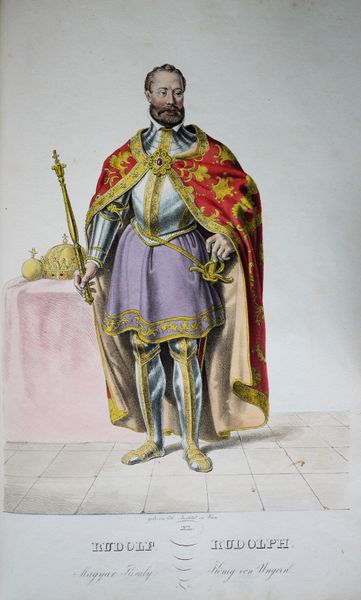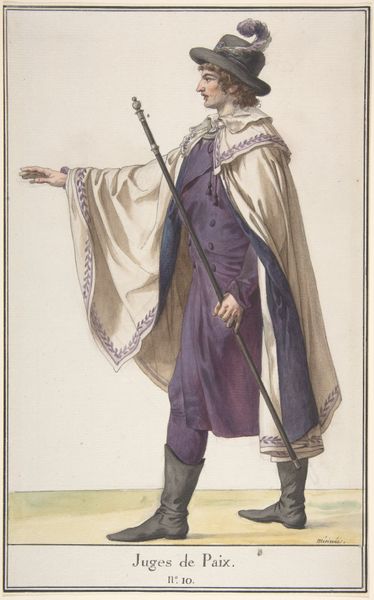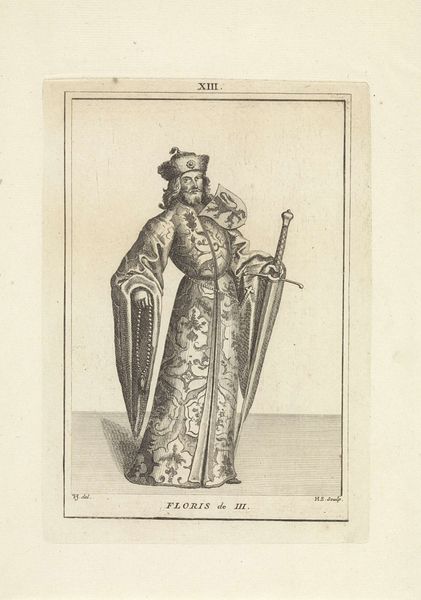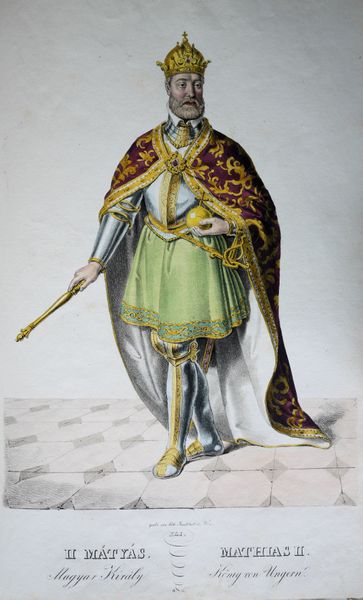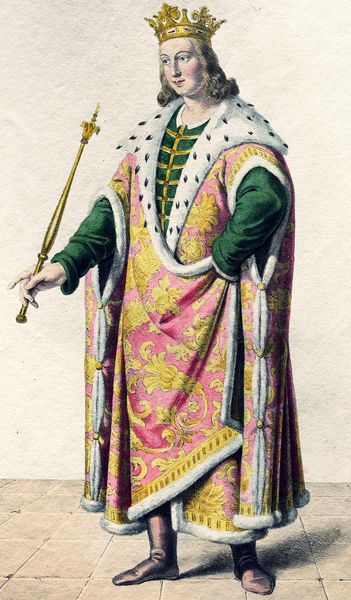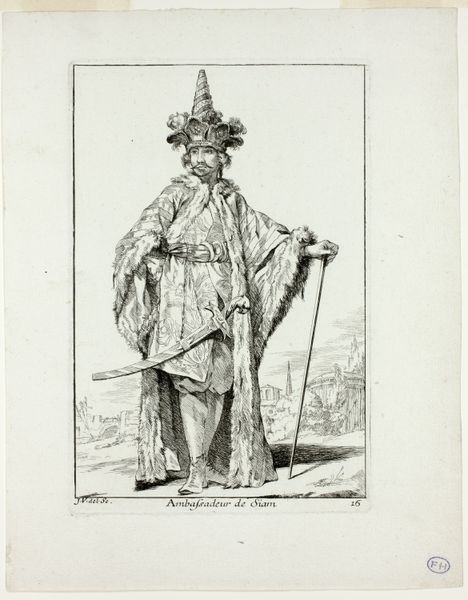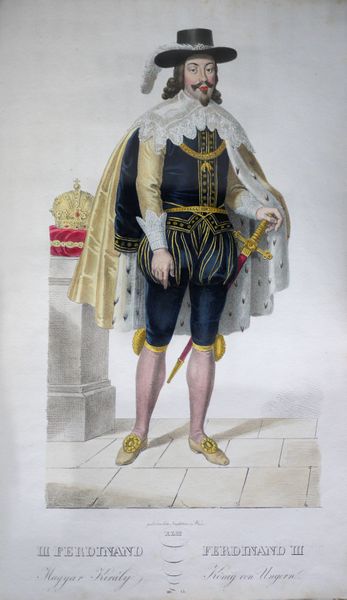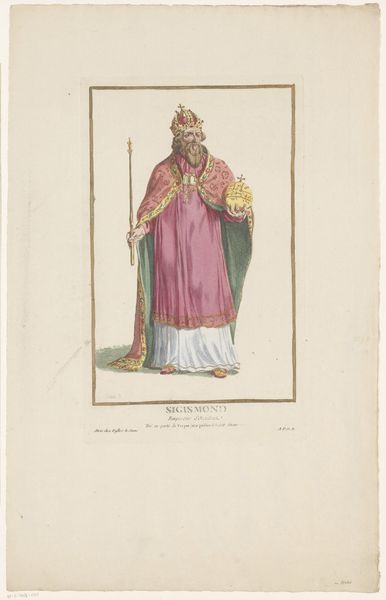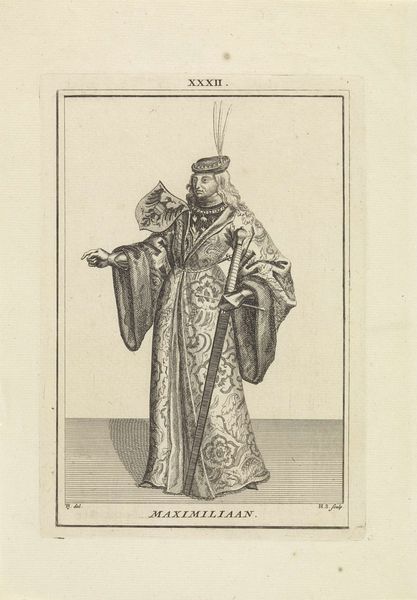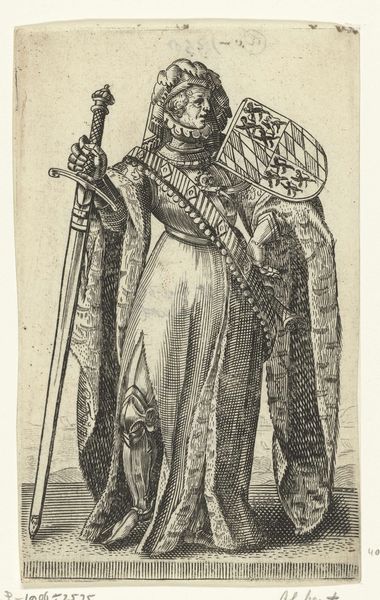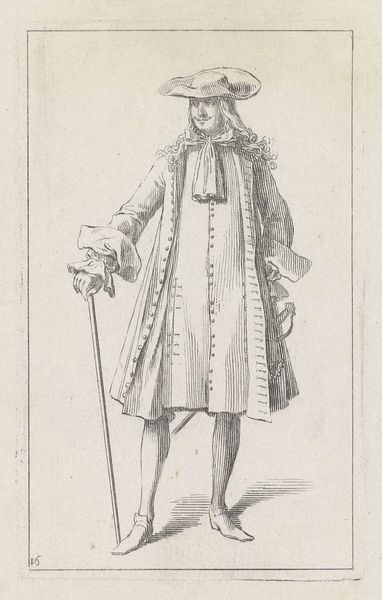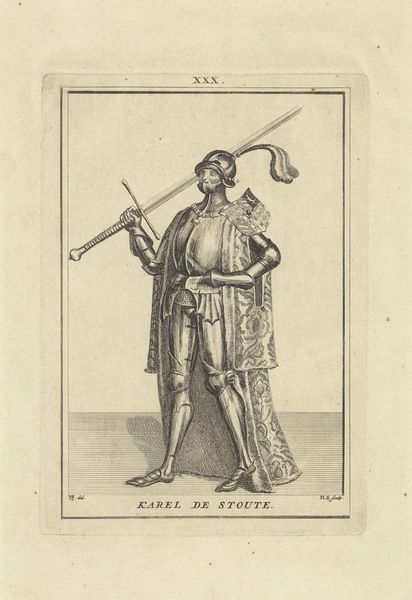
Copyright: Public domain
Émile Bayard’s "Calpigi, from ''Tarare''" presents us with a figure adorned in what was perceived as oriental opulence, clutching a stringed instrument. The most striking aspect of the piece is the figure's towering headdress. This is a motif that carries echoes of ancient power, reminiscent of the papal tiaras or the miters of high priests. Consider the emotional impact of such symbols. They don't merely denote status, they invoke a visceral response, tapping into our collective memory of authority. Here, however, it seems Bayard inverts the cultural power of the hat by placing it on a comical character. Think of similar motifs across history – how crowns in medieval art signified divine right, or how feathered headdresses in indigenous cultures symbolized a connection to the spiritual realm. These symbols evolve, their meanings oscillate, yet their capacity to stir the subconscious remains potent. Thus, Bayard's choice of attire for Calpigi is not just decorative. It is a loaded signifier, whose meaning twists and turns through history, leaving a rich residue of cultural memory.
Comments
No comments
Be the first to comment and join the conversation on the ultimate creative platform.
